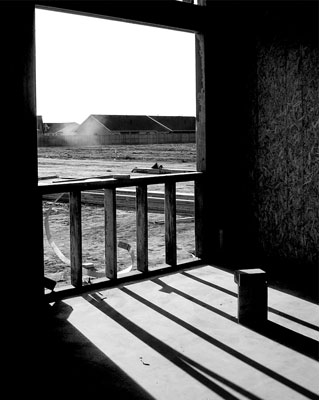All Nonfiction
- Bullying
- Books
- Academic
- Author Interviews
- Celebrity interviews
- College Articles
- College Essays
- Educator of the Year
- Heroes
- Interviews
- Memoir
- Personal Experience
- Sports
- Travel & Culture
All Opinions
- Bullying
- Current Events / Politics
- Discrimination
- Drugs / Alcohol / Smoking
- Entertainment / Celebrities
- Environment
- Love / Relationships
- Movies / Music / TV
- Pop Culture / Trends
- School / College
- Social Issues / Civics
- Spirituality / Religion
- Sports / Hobbies
All Hot Topics
- Bullying
- Community Service
- Environment
- Health
- Letters to the Editor
- Pride & Prejudice
- What Matters
- Back
Summer Guide
- Program Links
- Program Reviews
- Back
College Guide
- College Links
- College Reviews
- College Essays
- College Articles
- Back
McCarthy's The Road Discovered
"He made his way down through the ruins of an old apple orchard, black and gnarly stumps, dead grass to his knees. He stood in the door of the barn and listened. Pale slatted light. He walked along the dusty stalls. He stood in the center of the barn bay and listened but there was nothing…he walked down to the end of the loft and looked out the high gable window at the country below, the pieced land dead and gray, the fence, the road.”
In this passage from Cormac McCarthy’s “The Road”, the author employs literary devices including sentence structure and visual imagery to convey the isolation, remoteness and bleakness of the earth and its impact on the characters.
McCarthy’s short, fragmented sentences which often leave out conjunctions or verbs, serve to create a dazed and disillusioned mood of emotional detachment from the barren wasteland that the two protagonists have become accustomed to. This mood emphasizes the fact that survival has taken such priority in the two characters’ lives that they are now immune to the devastation that has befallen the earth once vibrant with life. The grammatically incorrect listing of “the ruins of an apple orchard, black and gnarly stumps, dead grass to his knees” reflects the confusion and chaos of the post-apocalyptic world and the characters’ inabilities to think of anything besides keeping themselves alive. McCarthy depicts the father wandering through an area devastated by humans and natural forces, absorbing the scene of destruction and fruitlessness without sentiment. He also supports this image by following the phrase “he stood in the door of the barn and listened” with the sentence fragment “pale slatted light” which is disconnected from the expected auditory imagery. This unexpected, abrupt and simplistic detail again reinforces McCarthy’s point that the character is completely at the mercy of destiny and can only react as is necessary to survive. He is incapable of formulating cohesive and connected thoughts if the situation does not warrant it, a truth which strongly supports the mood of dazed disillusionment as a result of the ghastly horrors the characters have undergone to survive.
Visual imagery is also utilized to create this mood of emotional detachment and thus strengthen the author’s point that the focus on survival has depleted his characters of any sentiment regarding the world around them. The “black and gnarly stumps”, “dead grass” and “pieced land” contribute to the image of devastation, death and destruction that McCarthy places his characters in, and it is their apathy towards their surroundings that emphasizes the effect this ordeal has had upon them. The fact that the father can survey this barren landscape and only comment on the details of the destruction with little emotional connection emphasizes the fact that the struggles he has endured with his son have rendered him immune to the horrors of the post-apocalyptic world and made him capable only of ensuring his own survival and the survival of his son.

Similar Articles
JOIN THE DISCUSSION
This article has 0 comments.
